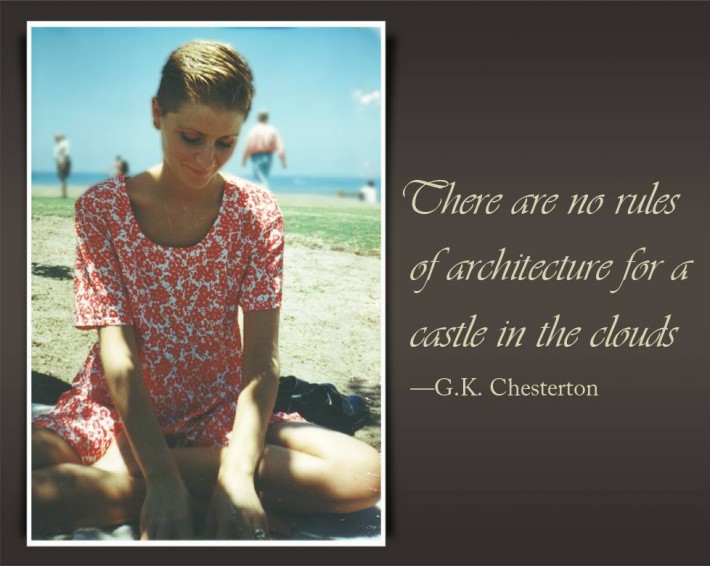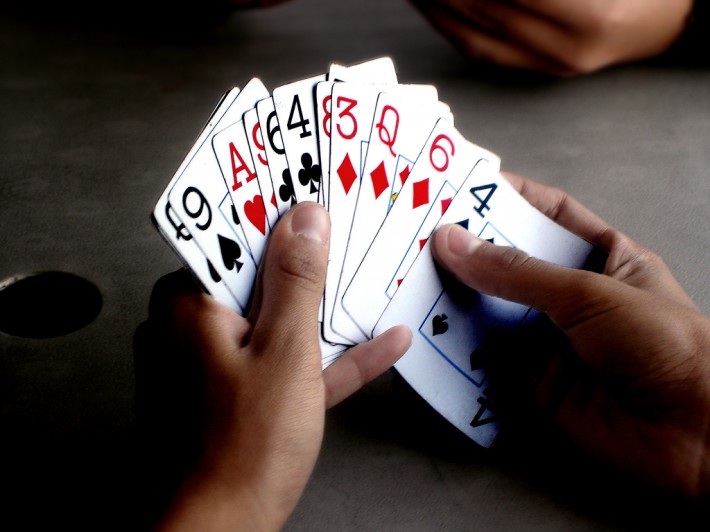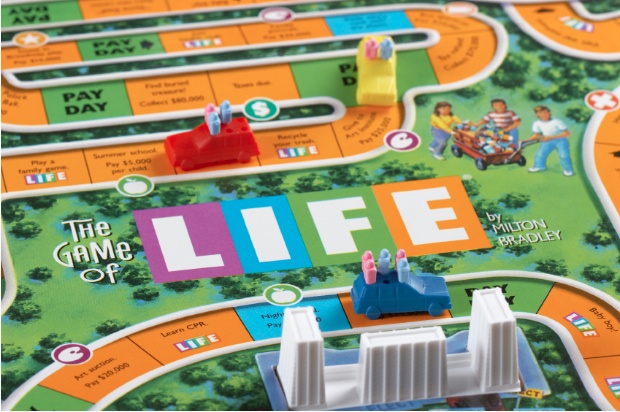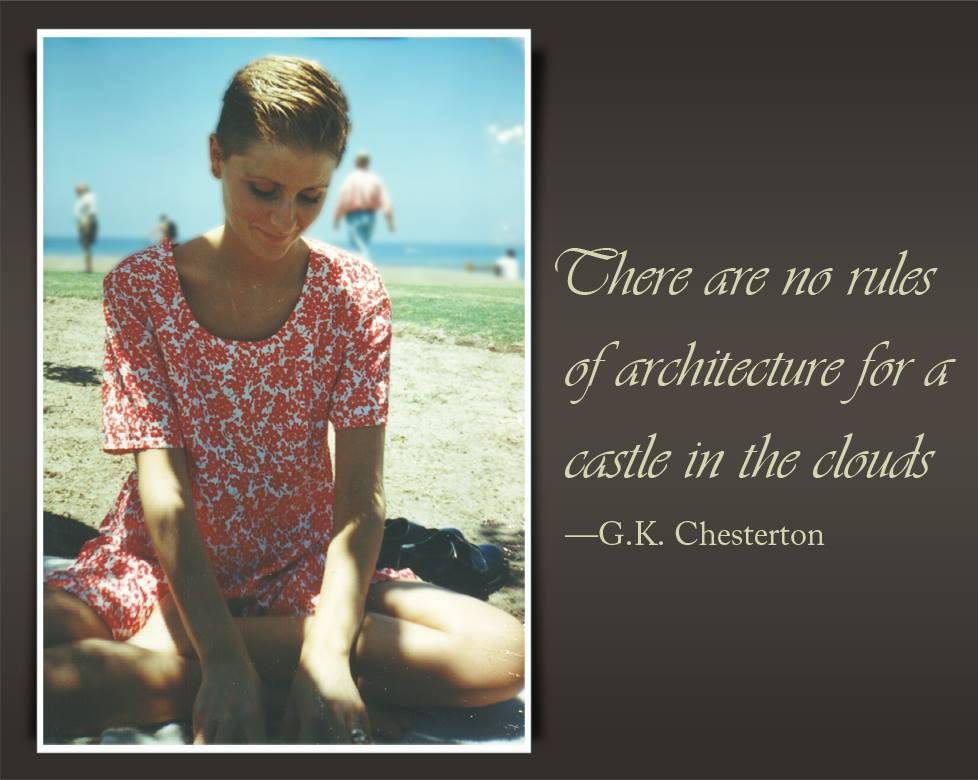If you want to change, then change your rules: On first and second order change

“Rummy?” she tentatively declared, with a slight smile and questioning lilt to her voice.
We had been married for a few months, and acquainted for not much longer than that. This was to be a golden time of our lives, playing cards on the beach and soaking up the San Diego sun in between my deployments in the U.S. Navy. At least it would have been golden, if only she would stop beating me at rummy.
I taught her the rules only a few weeks prior, and already we were playing different games. I had a habit of holding cards in my hand, waiting until I had rummy to lay down with a flourish and stick her with as many negative points as possible. My wife, likely in response to the way I played, would lay down cards early to avoid getting stuck with points. She adapted, and I was the one left with cards in my hand and a growing awareness of my immaturity towards losing.
We learned more than card strategy on that Californian beach. We began teaching ourselves the rules of the game of how we were to interact over the next 20 years.
Rules to live by

We all have rules we play by. For individuals, these rules are the beliefs we hold and the narratives we play in our head. For organisations and groups, these rules come in the form of the culture, the accepted norms, “the way things are done around here”.
Rules by their nature resist change to keep things the same and maintain status quo. The longer those rules are in place, the less likely they are to change. Both individuals and organisations develop rules as defence mechanisms to keep things safe.
Except our rules are not always in our best interest. My rule of waiting until the end to lay all my cards down caused me to lose the hand. My rule of needing to win or be seen as someone who wins wasn’t helping things either.
When the situation changes around us, we make decisions on which rules to keep and which rules to leave behind. A saying in the consultancy in which I work is that we can choose to “play the game, change the rules, or change the game”. This is a principle reflected in the concept of first and second order change.
First and second order change

A principle in change literature talks about first and second order change. First order change is described as maintaining the overall system. You are doing more or less of the same thing to get a variation on the same results. It can be considered “change without change”.
Second order change on the other hand represents a fundamental change to the system. The end result may look nothing like what you started with. Second order change involves new beliefs and new stories, and is complex and irreversible.
| First order change | Second order change |
| An engineer becoming more technically proficient in the role. | Moving from a role as an engineer to an executive manager. |
| A 50-person manufacturing company hiring ten additional staff to increase production. | A 50-person manufacturing company dropping to a 10-person support team and brokering product from off-shore. |
| A government owned corporation becoming more efficient. | A government owned corporation becoming a commercial entity and competing in the open market. |

What we think is first order change may actually be second order change. I think of this as a “pendulum fallacy” based on a story from early in my career.
I was a manager in my family’s electronics manufacturing company in the late 1990’s. For over 30 years my parents had built one of the few volume printed circuit board production facilities in the Pacific Northwest. The main threat at the time was increasing competition from China, enticing customers to go direct off-shore for less than half the cost.
I distinctly recall a conversation about how what we were experiencing was a pendulum. We had seen this before, the quality and service from China was poor, and customers would come back to us.
Unfortunately, we were only partially correct. We saw a slight uptake in orders for a few months, but the off-shore companies were quick learners. The overseas companies invested heavily in technology and process to improve quality and established strong relationships with brokers to ensure personalised service.
What we thought was a pendulum swing became a paradigm shift. We were responding as if it was first order change, when we were actually experiencing second order change. We did adjust and begin to broker product from off-shore ourselves as well as automate through equipment. However, these changes occurred at the same time as the 9/11 terrorist attacks and we were unable to recover in time. We were not set up to adapt quickly enough and the company eventually went into administration.
The reason we did not change earlier was not because we lacked information or that we did not see what was happening. The issue was that our mental models did not allow us to adapt.
This is the same conclusion made by a study of railroads in the United States in the 90s. The study found that the reason why one railroad succeeded and another failed was not that the leaders did not see the change coming, but that successful leaders were able to shift their rules about how organisational performance is affected by the changed environment.
This highlights why for most organisational challenges, “culture is the answer”. Issues often exist as a result of reinforcing beliefs. If you address the issue without addressing the belief, you can expect more issues.
These beliefs create systems that are self-protecting. Change to the system can be seen as a threat. Organisations undergoing restructures, mergers, and acquisitions can fall into the trap of “moving the deck chairs on the titanic”. They approach second order change with a first order mentality, waiting for things to get back to “normal”.
This applies to individuals as well. When we receive feedback that may change the system, we have a tendency to interpret that feedback in such a way that will not change the system. We can then create a range of defence mechanisms, as I wrote about in a previous post. Transformation changes such as career transitions, relationship changes, and other assorted shifts under the guise of “mid-life crisis” can be attempts to shake things up and change the rules of their game, only to end up with “change without changing”. You change your situation but play by the same rules and wonder why you get the same results. This leads to playing harder or stop playing altogether, neither of which may get you the results you are after.
Change the rules

Not seeing or responding to second order change is understandable, as it is not how we are wired up. Consider this statement:
“A system cannot change its own rules.”
The rules of your game have been created over the course of your life. You spin your dial and move the spaces on the dial. You pick up the card and do what is said on the card. It is difficult if not impossible to change your rules without feedback from outside your system.
For example, one rule you have relates to how much of your self-esteem is related to your performance or other factors outside of yourself. I previously posted about research showing how people that move from fragile to secure self-esteem require the presence of an outside coach or mentor to challenge mental models and help form new rules.
The same principle applies for organisations, as organisational change is dependent on the adaptability of the leader’s mental models. Research reflects that only 30% of change in organisations is second-order change. Most of the change we are familiar with occurs within the boundaries of the rules we create.
Four steps to prepare for second order change
Just knowing this information is not enough to change. Rules must be broken.
If you are looking to change situations in your own life or that of the organisation in which you work, here are four steps that may help you prepare for second-order change:
- Define your rules
What are the rules that you play by? What beliefs and narratives direct your thoughts and behaviour? What do you believe about yourself? About others? For you personally, take a week and practice being mindful to capture your rules with curiosity and without judgement. For your organisation, consider some questions I captured using Edgar Schein’s excellent culture model that outlines key assumptions in organisations. - Break old rules and create new rules
What rules do you feel may not be serving you? What would be the cost of breaking those rules? What would it look like to break the rule? What rules might replace the old rules? Approach it like playing a game in which you are creating the rules, try out something new. - Get outside feedback
Get a trusted outside perspective to challenge your rules and identify which rules are and are not working for you. - Start small
Most situations do not require completely changing the game, although you may be so attached to some rules that it may feel like it. What is one rule you can change this week? What would it look like to be in the same situation but playing a different game? Acknowledge that success is cumulative and try on one rule for size.
Reflecting on where I am now compared to that game of rummy on the San Diego beach, I have learned to both change the rules and change the game. My wife and I played rummy again the other day, and I still hold on to cards to try and maximise the points when I win. Except I am now playing a different game. The goal is not winning, but enjoying time with my wife. It is still cards, but I am playing a different game.
If part of your game is to share, then I encourage you to click on a button below that aligns with your social platform of choice. If you want to talk about your own journey of making and breaking rules, please feel free to leave comment. I wish you the best as you navigate through your own first and second order changes.


tee hee and I won again!! 😛
This is great Chad – insightful as always! Love the 4 steps to second order change. How much more productive will our change be if we consider if from this perspective. Thanks again! 🙂
A lovely follow up for me to read after our chat the other day. A chance for me to ponder if I have changed the game or still playing by the same rules….